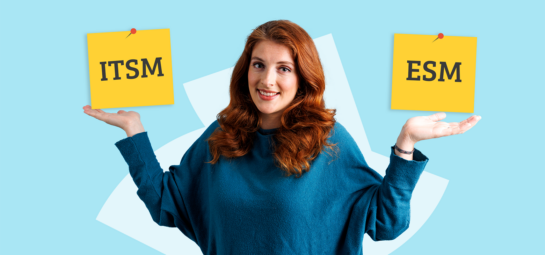More efficient, customer-centric IT services? Try Lean Service Management

With customer expectations on the rise and technology advancing rapidly, IT departments are under a lot of pressure to keep up.
The good news? The Lean philosophy of eliminating waste – anything that doesn’t add customer value – makes your IT service management more efficient and customer-centric.
A brief history of Lean
Lean is a philosophy that concentrates on cutting the so-called waste in your daily work to focus on what truly matters: delivering customer value. Anything that doesn’t add customer value is considered waste.
A good example of a Lean approach is McDonald’s Speedee Service System. Back in 1948, McDonald’s redesigned their kitchen to maximize efficiency. The end result? Hamburgers served within 30 seconds.
Currently, car manufacturer Toyota is the leading Lean exemplar in the world, thanks to the Toyota Production System (TPS), invented in the fifties to eliminate waste in Toyota’s manufacturing and logistics processes.
The benefits of Lean Service Management
The Lean approach also works outside of hamburgers and cars.
Even though Lean doesn’t offer any specific guidance for IT service management, its philosophy works well alongside other ITSM frameworks. In fact, ITIL 4’s introduction of the Service Value System relies heavily on the Lean mindset and terminology.
Lean Service Management’s focus on customer value helps you step into your customers’ shoes and think from their perspective. This makes adapting your IT services to meet increasing customer expectations easier. And eliminating steps in your processes that don’t add customer value makes delivering IT services more efficient, ultimately lowering resolution times and increasing customer satisfaction.
Remember: Lean is a philosophy, not a rigid, unchanging set of beliefs and methods.
The 5 principles of Lean Service Management
A Lean process is based on the following 5 principles:
1. Identify value
Specify the value your customer is looking for. What do they want or need? What problem do they have that needs to be solved?
2. Map the value stream
Identify which process you need to deliver this specific value to your customer. This is called a value stream. Challenge the steps within this process: do they help deliver value? If not, try to eliminate them.
3. Create flow
Make sure the value stream runs in tight sequence so the value will flow smoothly to your customer.
4. Establish pull
Deliver the value when your customer requests it.
5. Seek perfection
Repeat the process, striving to make it perfect. Note that the goal here isn’t perfection itself, as that’s unattainable, but rather the pursuit of perfection – also known as continuous improvement.
Use Lean Service Management flexibly
These Lean principles provide you with great tools to start improving your IT processes. But remember: Lean is a philosophy, not a rigid, unchanging set of beliefs and methods. It can change or look differently, depending on the context and on the unique needs of your organization. So, pick and choose the elements from Lean that work for you and start there.
This attitude is part of a little something we at TOPdesk call service flux: embracing change and using philosophies and frameworks flexibly to make iterative improvements to your services. All so you can adapt to a constantly changing world.
How to put customers first
Lean Service Management is all about putting your customers first. Want to learn how to make your services more customer-centric while cutting costs and improving efficiency? Download our Customer Centricity in ITSM e-book, including:
- An 8-step plan for drawing up and successfully launching your service catalogue
- How to cut lead and resolution times using Knowledge Centered Service (KCS)
- The 3 key factors for effective customer communication
- How to measure your customer satisfaction
Inspire others, share this blog



